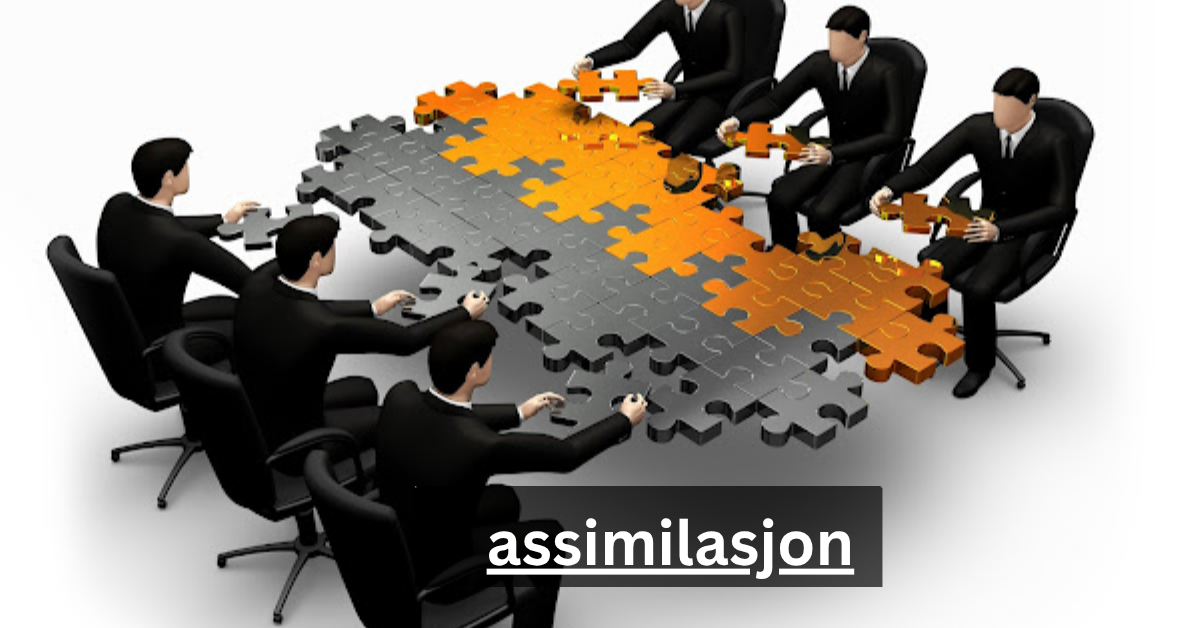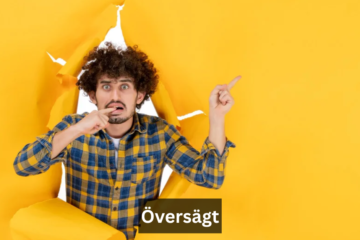The term assimilasjon (assimilation) refers to the process by which individuals or groups adopt the culture, language, and social habits of another—often dominant—society. In simple terms, it’s how people become “part” of a larger community by blending into its cultural and social fabric.
In an era of migration, globalization, and digital connection, the concept of assimilasjon is more significant than ever. Nations like Norway, with their diverse populations and strong cultural heritage, constantly balance between preserving identity and fostering inclusion.
This article explores assimilasjon from multiple perspectives—historical, sociological, political, and cultural—revealing how it shapes identity, belonging, and the evolving story of humanity.
2. What is Assimilation? – A Fundamental Explanation
Definition and etymology of “assimilasjon”
Derived from the Latin assimilare, meaning “to make similar,” assimilation refers to the process where minority groups adopt the customs, language, and behavior of the dominant culture. It is both a natural social phenomenon and a political tool historically used to achieve national unity.
Cultural, social, and linguistic assimilation
- Cultural assimilation (kulturell assimilasjon) occurs when traditions, customs, and values are adopted from the dominant culture.
- Social assimilation (sosial assimilasjon) involves blending into societal networks—friendships, workplaces, and institutions.
- Linguistic assimilation (språklig assimilasjon) reflects how minority languages gradually give way to the majority language, as seen historically with the Sami and Kven people in Norway.
Assimilation in sociology and anthropology
According to Milton Gordon’s “Assimilation Theory” (1964) and Robert Park’s Chicago School, assimilation is a multi-step process that includes cultural, structural, and civic integration. Anthropologists further view it as an adaptive mechanism within evolving societies.
3. Historical Background of Assimilation in Norway
The Fornorsking Policy
Norway’s history holds lessons on assimilasjonspolitikk (assimilation policy). The Fornorskingspolitikk or Norwegianization policy aimed to integrate indigenous groups like the Samer (Sami people) and Kvenfolket (Kven people) into mainstream Norwegian society. Schools prohibited native languages, and cultural practices were often suppressed.
Experiences of the Sami and Kven peoples
For the Sami and Kven communities, assimilasjon wasn’t a choice—it was imposed. This tvungen assimilasjon (forced assimilation) led to language loss, cultural alienation, and generational trauma. Yet, resilience persisted, and the revival of Sametinget (the Sámi Parliament) symbolizes the fight for cultural preservation and recognition.
Lessons from the past
Modern Norway acknowledges this chapter as a cautionary tale. Institutions like Bufdir (Barne-, ungdoms- og familiedirektoratet) and LDO (Likestillings- og diskrimineringsombudet) now champion inclusion, equality, and diversity, ensuring that assimilation never again becomes suppression.
4. Types of Assimilation in Society
Cultural Assimilation
Cultural assimilation involves adopting mainstream traditions, festivals, and lifestyle habits. While it encourages shared identity, it can sometimes blur unique cultural distinctions.
Linguistic Assimilation
Language is power. When minority languages fade under majority influence—like Norwegian over Sami—it represents språklig assimilasjon. Institutions like UNESCO advocate for language preservation as part of global cultural heritage.
Social Assimilation
This form involves participation in social, political, and economic life. True sosial assimilasjon is achieved when newcomers are accepted as equals, without discrimination or prejudice.
Ethnic Assimilation
Etnisk assimilasjon merges different ethnic identities over generations, creating hybrid identities that reflect both heritage and adaptation—a process visible in multicultural cities across Norway and Europe.
5. Assimilation vs Integration – Key Differences
While assimilation requires minorities to adapt to the dominant culture, integration promotes coexistence and mutual respect.
- Assimilation: “You become like us.”
- Integration: “We live together, respecting differences.”
Examples in practice
Modern Norwegian innvandringspolitikk (immigration policy) emphasizes integration over assimilation through programs under the Integreringsloven (Integration Act), promoting diversity while fostering national unity.
Why integration is preferred today
Integration supports mangfold og inkludering (diversity and inclusion), aligning with the principles of the United Nations (FN) and the Nordic Council (Nordisk råd), which value equality and respect for cultural rights.
6. Global Perspectives on Assimilation
From the U.S. melting pot to Canada’s multiculturalism policy (1971), assimilation takes different forms. In colonial contexts, assimilasjon often enforced kulturell dominans, erasing indigenous identities.
Europe’s challenge
European nations face renewed debates on assimilation amid migration and globalization. Policies now shift from uniformity toward multikulturalisme (multiculturalism), aiming to celebrate ethnic and cultural differences.
Postcolonial insights
Postcolonial theory critiques forced assimilation as a legacy of colonialism. Today, countries strive for inclusive frameworks balancing cultural diversity with shared civic values.
7. Assimilation and Identity
Personal identity and belonging
Assimilation shapes how individuals see themselves—between two worlds. It can lead to identity conflicts but also to hybrid strength—a blend of old and new.
Between heritage and modernity
Many immigrants in Norway balance cultural heritage with the realities of modern life. The rise of flerkulturelt samfunn (multicultural society) reflects this dynamic balance.
Pride and cultural balance
Rather than losing identity, new generations often reinterpret it—preserving traditions while embracing modern Norwegian values like equality, community, and openness.
8. Assimilation in Contemporary Norway
Immigration policy and cultural adaptation
Norway’s innvandringspolitikk promotes inclusion through language courses, civic education, and equal access to opportunities. The Utdanningsdirektoratet (Norwegian Directorate for Education and Training) plays a key role in promoting cultural awareness in schools.
Norwegian values, language, and diversity
Modern assimilasjon i Norge centers on mutual adaptation. Learning Norwegian is encouraged, but respect for native and immigrant cultures remains vital for social harmony.
Role of minority institutions
Organizations like Sametinget, LDO, and Bufdir ensure that cultural diversity remains part of national identity—an evolution from Assimilasjon to inclusion.
10. The Role of Language in Assimilation
Language acts as the heart of culture. When linguistic Assimilasjon occurs, it can both connect and divide.
Norwegian as a majority language fosters unity, yet minoritetsspråk (minority languages) like Sami deserve preservation. UNESCO lists language diversity as a key element of global peace and identity.
Language preservation is vital for future generations to remain rooted in their heritage while participating fully in modern society.
11. Politics, Laws, and Social Programs
- The Norwegian Integration Act (Integreringsloven) establishes clear frameworks for inclusion through education, employment, and cultural participation.
- FN and UNESCO advocate for menneskerettigheter (human rights) and kulturelt mangfold (cultural diversity) as essential to sustainable development.
- Government bodies like Kulturdepartementet (Norwegian Ministry of Culture) and Bufdir ensure inclusion policies align with international standards.
12. Assimilasjon in Education and Media
Education as a bridge
Schools play a powerful role in shaping cultural understanding. The Utdanningsdirektoratet ensures that curricula promote tolerance, equality, and knowledge about minority cultures.
Media representation
Modern Norwegian media increasingly represents diverse voices, reducing stereotypes and promoting shared narratives. Cultural programs, art, and documentaries celebrate etnisk mangfold (ethnic diversity) and inclusion.
13. Society’s View on Assimilation
- Public opinion has evolved dramatically. From fornorsking (Norwegianization) to inclusion, the national discourse now emphasizes empathy and fairness.
- Political and social debates continue around how much adaptation should be expected from immigrants versus how much flexibility the host society should offer.
- Generational perspectives show that younger Norwegians view diversity as a strength, shaping a more inclusive cultural identity for the future.
14. The Future of Assimilation – Toward an Inclusive Society
Technology and globalization connect people across boundaries, creating hybrid cultures. Digital spaces blend languages, traditions, and worldviews, fostering empathy and collaboration.
Multicultural pride
Norway’s future lies in kulturell balanse—a blend of unity and uniqueness, where every cultural story contributes to the shared national narrative.
New models for coexistence
Rather than forced Assimilasjon, mutual adaptation becomes the new paradigm. Inclusion isn’t just policy—it’s a mindset.
Conclusion
The story of assimilasjon is not just about change—it’s about growth. From past mistakes to present progress, Norway’s journey reflects humanity’s quest for connection and respect.
We learn that true strength lies in embracing diversity, preserving heritage, and celebrating common humanity. Assimilation, when voluntary and respectful, can build bridges that last generations.
Frequently Asked Questions
What does Assimilasjon mean in Norway?
Assimilasjon in Norway signifies adapting to its language, culture, and values—once imposed, now a voluntary path toward inclusion and unity.
What is the difference between Assimilasjon and integration?
Assimilasjon implies adopting the dominant culture completely, while integration promotes participation while maintaining one’s cultural identity.
Why was the Norwegianization policy used against the Sami?
The Fornorskingspolitikk aimed to create a unified national identity but ended up suppressing Sami and Kven languages and traditions—a policy now recognized as unjust.
Is Assimilasjon good or bad for society?
It depends on context. Voluntary Assimilasjon can promote unity, but forced assimilation leads to cultural loss and inequality.
How can diversity and shared values coexist?
Through education, dialogue, and mutual respect—creating societies where all identities feel valued and included.
Stay in touch to get more updates & alerts on BaddieHub! Thank you



